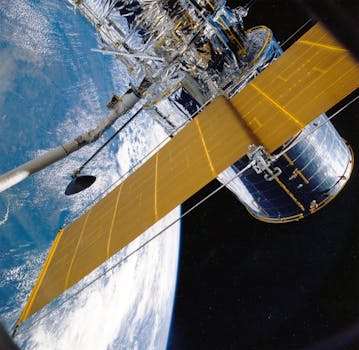The Future of Satellites: Revolutionizing Global Communication and Exploration
The future of satellites holds immense potential for transforming global communication, navigation, and space exploration. With advancements in technology, satellites are becoming increasingly sophisticated, enabling new applications and services that are set to revolutionize various industries.

The Future of Satellites: Revolutionizing Global Communication and Exploration
The future of satellites holds immense potential for transforming global communication, navigation, and space exploration. With advancements in technology, satellites are becoming increasingly sophisticated, enabling new applications and services that are set to revolutionize various industries. The future of satellites is closely tied to the concept of Future of satellites, which refers to the next generation of satellite technology that will enable faster, more secure, and more efficient communication and data transfer.
Advancements in Satellite Technology
Recent years have seen significant advancements in satellite technology, including the development of smaller, more efficient satellites, such as cube satellites and nano satellites. These satellites are designed to be launched at a lower cost and can be used for a variety of applications, including Earth observation, communication, and navigation. Additionally, the use of advanced materials and technologies, such as 3D printing and artificial intelligence, is enabling the creation of more complex and sophisticated satellites.
Applications of Satellites
Satellites have a wide range of applications, including global communication, navigation, Earth observation, and space exploration. Satellites are used to provide internet connectivity to remote and underserved areas, enable global navigation systems, such as GPS, and monitor the Earth’s climate and natural resources. They are also used for space exploration, including missions to the Moon, Mars, and other planets in our solar system.
Challenges and Opportunities
Despite the many advancements in satellite technology, there are still several challenges and opportunities that need to be addressed. One of the major challenges is the increasing amount of space debris in Earth’s orbit, which can pose a risk to operational satellites and other space-based assets. Another challenge is the need for more efficient and sustainable launch systems, as well as the development of new technologies to enable the reuse and recycling of satellites. On the other hand, the growing demand for satellite-based services, such as global communication and navigation, presents a significant opportunity for the satellite industry to expand and innovate.
Conclusion
In conclusion, the future of satellites is filled with immense potential and opportunities for growth and innovation. With advancements in technology, satellites are becoming increasingly sophisticated, enabling new applications and services that are set to revolutionize various industries. As the satellite industry continues to evolve, it is essential to address the challenges and opportunities that arise, including the need for more efficient and sustainable launch systems, the development of new technologies, and the growing demand for satellite-based services.




